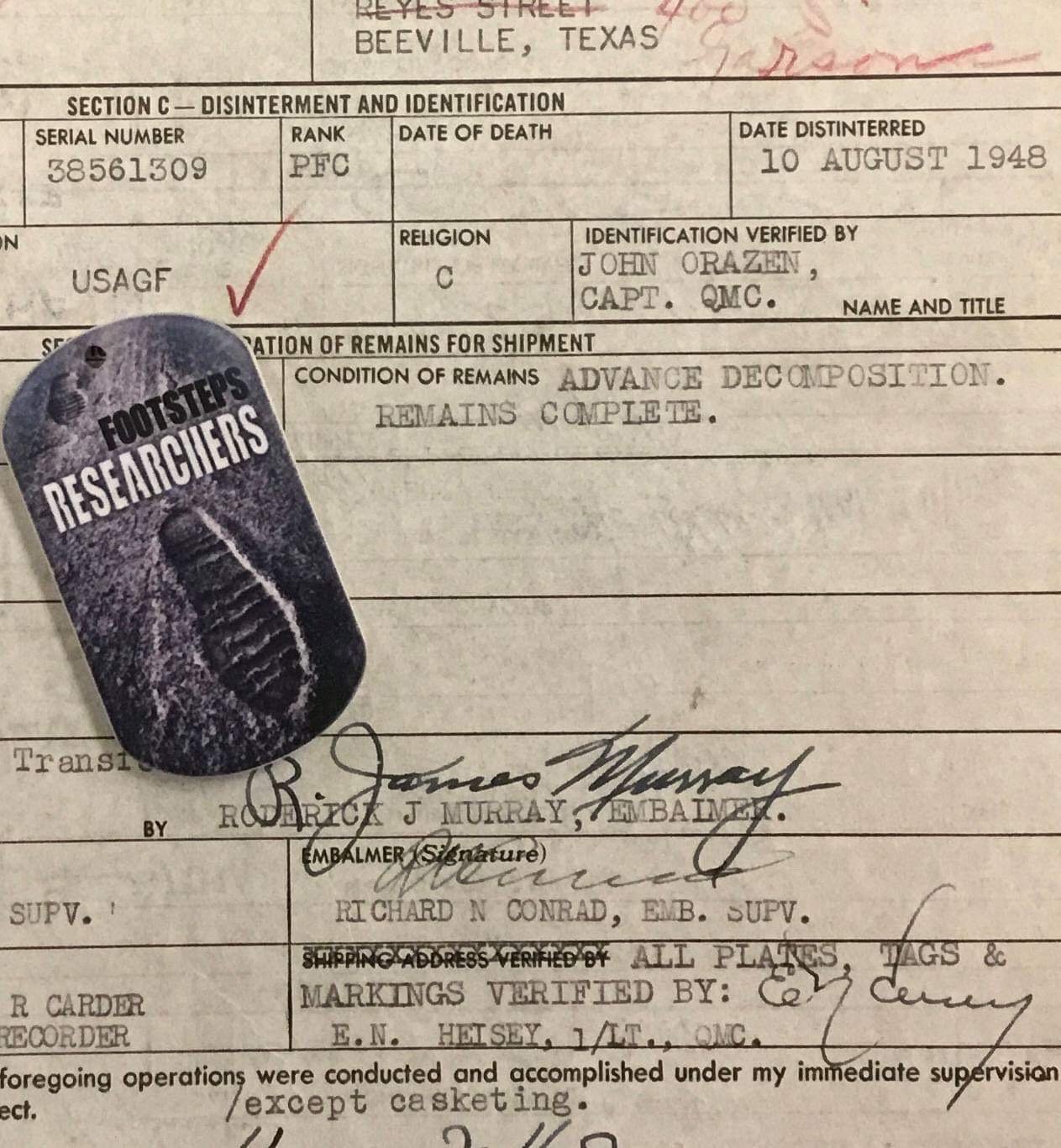
Archival Military Research
National Archives St. Louis, Missouri
-
Official Military Personnel File (OMPF)
Official Military Personnel File (OMPF) consists of documents that reflect fitness for service, performance of duties, entitlements, accession, training, education, performance, discipline, decorations and awards, assignments, duties, casualty status, and separation/retirement.
On July 12, 1973, a fire at the National Personnel Records Center (NPRC) destroyed approximately 16-18 million Official Military Personnel Files (OMPF). The records affected are Army 80% and Air Force 70%. However, in the years following the fire, the NPRC collected numerous series of records (Auxiliary Records) that are used to reconstruct basic service information.
Navy, Marine Corps, and Coast Guard records were not in St. Louis at the time of the fire but were transferred and exist in St Louis today.

-
Individual Deceased Persons File (IDPF)
An IDPF is a personnel file created by the military services to document the death of a military member and the related actions associated with the disposition of the remains. If a soldier died of wounds or was killed in action, the IDPF will be available.
Sometimes called a Mortuary File or Casualty File, the National Archives at St. Louis has legal custody of IDPFs for the Air Force, Marine Corps, Navy, and Army. Researchers can order the file and image for a client.
These files are full of genealogical material and information which help in family and academic research. This material can help build a history if the veterans military personnel records was lost in the 1973 National Personnel Records Center Fire.
-
Morning Reports (MR)
The morning reports are company-level, daily reports on microfilm reels which document status changes for assigned personnel of all Army units from WWI through Vietnam.
Morning reports are not rosters; however, you can find soldier’s names on the report if their status changed. Promotions, demotions, wounded (lightly or severly), killed in action, died of wounds, transferred, assigned, sick, sent to hospital, etc. are various pieces of information we can find for you by tracking the microfilm.
These documents contain the date and location of the company, sometimes with coordinates! These reports are the primary tool we use to create Footsteps Tours.

National Archives College Park, Maryland
-
After Action Reports/Unit Journals
After Action Reports and Unit Journals are official military documents that record the events of a combat unit during a specific period of time. They are usually written by officers and non-commissioned officers of the unit and contain information about the unit’s movements, operations, and other relevant details. These records are useful for researchers who want to learn more about a unit’s activities during a particular period of time.

-
Histories/General Orders
General Orders during World War II were used to award individual and unit decorations, activate, inactivate, organize, reorganize, designate, and assign General Staff. These documents are found at the National Archives in College Park. We search for these usually at the regiment or division level. Not all General Orders are available and sometimes they are only partial documents. We get lucky sometimes and can find a veteran’s award for the family.

-
Photographs/Maps
With researchers nearby NARA in College Park, Maryland, we are able to image the vast collection of pictures taken by thousands of photographers and artists who documented the war on a huge scale. The pictures depict every activity of the war, including training, combat, support services, and much more. Maps are different sizes and one of the more difficult documents to find and image. Overlays to the original maps are also possible to find.



